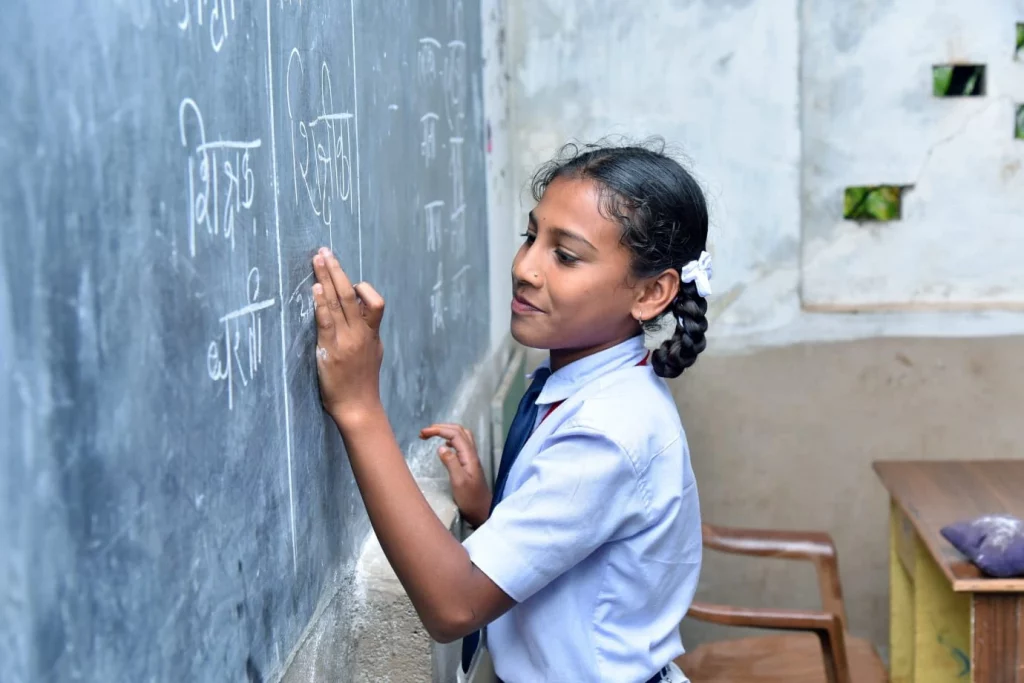Amidst severe air pollution in Delhi, the government had announced the shutdown of all schools as the AQI hovered over 500 across most places, reaching the ‘severe’ category for the first time this season. Leaders rose to the stage to demand action to protect and safeguard the children from inhaling the severely polluted air.
Air pollution continues to remain one of the biggest silent threats to the lives of children under 5 in India, accounting for 464 deaths daily. Air pollution is currently the second biggest health risk for children globally, surpassing the health threats from lack of clean water and poor sanitation. This most recent data from the US-based research group Health Effects Institute (HEI) reveals how air pollution has been responsible for more than eight million fatalities in 2021, affecting adults and children.
How are Children More Susceptible to Air Pollution?
Children are particularly vulnerable to the negative health impacts of rising air pollution. The damage and impact caused by air pollution can be seen as taking a toll since they are inside the mother’s womb, and these effects can last a lifetime. For instance, because their lungs, bodies, and brains are still developing, youngsters breathe in more air per kilogram of body weight and absorb more toxins than adults.
The inequities linked to the impact of air pollution on child health are striking. Exposure to air pollution in young children is linked to pneumonia, responsible for 1 in 5 child deaths globally, and asthma, the most common chronic respiratory disease in older children.
Is Shutting Down Schools a Wise Idea?
This is not the first time the government has closed schools to protect children from the annual air pollution. However, the justification for shutting down schools as a measure to manage air quality for children is highly unscientific. On the one hand, it absolves educational institutions and governments of their responsibility to ensure their children breathe clean and healthy air. On the other hand, it is wrongly assumed that children can breathe clean air at home.
While assuming that a home setting provides clean air, we overlook a large population of low-income children, often housed in shanties and slum areas, who are most vulnerable to air and water pollution. Hence, shutting down schools further disproportionately affects these disadvantaged children, as their academic performance also suffers.
Further, a study published in 2022 found that indoor air pollution in Delhi is on par and, at times, worse than outdoor air pollution. The study established that PM2.5 levels were dangerously high in both high- and low-income families.
The indoor air pollution levels of high-income homes were slightly lower than those of lower-income households, even though they were more likely to purchase air purifiers. Household air pollution can be caused by several things, including cooking, cleaning, using incense sticks, and the penetration of external air combined with inadequate ventilation, heat, and humidity. Although higher-income groups can purchase air purifiers, it only reduces pollution levels by a marginal percentage. Outdoor air, on the other hand, benefits from dispersion. Indoor areas are more vulnerable to concentrated pollution without adequate ventilation or air purification, particularly during colder months.
Rising air pollution deepens the education divide between households from different socioeconomic backgrounds and exacerbates school closures. Shutting down of schools continues to take a widening toll on students regarding learning outcomes and social and psychological development.
Closing all schools is not the answer to the pollution issue. For practical reasons, the government may be unable to grant certain institutions exemptions; however, a long-term solution that does not interfere with education is required. Today’s children are no longer confined to one place and constantly move around for education and educational activities. Constant closure of schools because of Covid and pollution gives the impression that they are the most unsafe places, which is invalid.
Dealing with Rising Pollution?
India’s annual average PM2.5 levels are around 55 micrograms per cubic meter of air (µg/m³), more than ten times the World Health Organization’s (WHO) guidelines, exposing its 1.4 billion people to severe health risks.
Air pollution is now well-established as one of India’s biggest persistent causes of the health crisis. Several Indian cities are in the world’s top 10 most polluted areas. But what is being done to tackle this?
Over the years, the government of India has gradually increased funding for the Control of Pollution scheme, with the 2023-24 budget estimating a surge to over INR 750 cr. However, there continues to be a huge gap between funding and the actual utilisation of the funds to combat pollution.
Addressing air pollution saves lives and the environment from negatively impacting future generations. Whereas several efforts have been made to adopt measures to combat pollution, approximately half a million deaths among children in 2021 were linked to indoor air pollution from cooking with dirty fuels, including biomass, charcoal, paraffin and coal.
Through several initiatives like Shiksha Na Ruke, Smile Foundation has always been at the forefront of efforts to bring classroom education back on track. Post-COVID-19, as schools gradually reopened, the initiative assisted 87 institutions in opening and resuming physical classes. The initiative has helped underprivileged children continue their education through a blended learning approach.
At Smile Foundation, our core mission is to ensure that every child, regardless of the challenges they face, continues their educational journey. Through initiatives like Mission Education, we have supported nearly 50,000 students across 20 states, helping them overcome the barriers posed by school closures. Our Mission Education Centres have played a pivotal role, not only in keeping education accessible but also in facilitating the safe reopening of schools through direct interventions.
Our focus is on supporting children from marginalised communities by providing them with the education and resources they need to thrive. We are deeply committed towards ensuring that their learning journey continues, despite any challenges. Join us in supporting young learners with the opportunity to learn and thrive and experience a healthy and holistic childhood.










